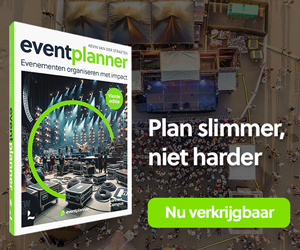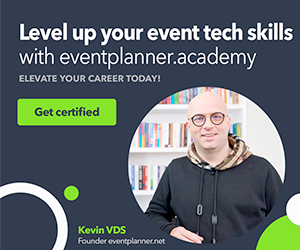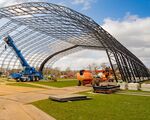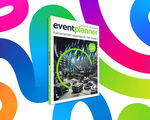Onze mening? In de maanden die komen, gaan hybride events populair worden. Is dat vreemd? Neen. Het is geen nieuw concept, maar we realiseren pas nu het potentieel dat dit type evenement heeft.
Los van lokale deelnemers, kunnen hybride evenementen je helpen een sterke wereldwijde online community op te bouwen terwijl je het aantal mensen dat je samenbrengt beperkt. Je kunt zowel fysieke en digitale belevingen combineren, experimenteren met verschillende formats, en tegelijkertijd je fysieke en digitale publiek engageren. Allemaal voordelen. Maar hybride events komen met hun eigen uitdagingen. En één daarvan is de workload.
Een fysiek evenement plannen is al een stressje, hetzelfde geldt voor puur digitale events. Daar heb je je locatie niet voor te bereiden en te decoreren, geen cateraar zoeken, ... Je creëert enkel verschillende online belevingen, een virtueel podium en je regelt de streaming (wat wel geen eenvoudige opdracht is als je simultane of back-to-back sessies hebt).
Beeld je nu even al deze acties tegelijkertijd in. Bij een hybride event heb je meer werk dan voorheen. Je combineert namelijk fysieke gasten en deelnemers op afstand. Je moet dus zowel de fysieke als digitale versie van je event klaarzetten. Niet exact iets voor bangeriken. Daarom hebben wij een oplijsting gemaakt van de stappen die je kunt volgen bij de voorbereiding van een hybride event. Ze zullen je helpen beter georganiseerd te zijn en je weet op deze manier ook welke workload je mag verwachten:
Stap 1: Voeg nieuwe rollen toe aan je planningsteam
Kans is groot dat je een fantastisch ‘fysiek’ team hebt. Bij een hybride event heb je ook collega’s nodig die verantwoordelijk zijn voor het online gedeelte. Nieuwe rollen dus! Een verantwoordelijke voor het virtuele podium bijvoorbeeld, en iemand die samenwerkt met je tech-partner.
Je hebt ook een AV-professional nodig die de kennissessies gaat streamen. En als je kiest voor exclusieve digitale belevingen, dan heb je iemand nodig in je team voor de digitale backstage. Deze persoon connecteert met de online sprekers en providers van de belevingen (zoals yoga leraren, merkambassadeurs enzovoort) en helpt hen live te gaan op het virtuele podium. Ten slotte zoek je best ook iemand die zich bezighoudt met het engagement bij de virtuele deelnemers.
Stap 2: zorg voor nieuwe online tools
Iets wat je ook moet overwegen, is de aankoop van nieuwe uitrustingen en digitale tools voor het online stuk van je hybride evenement. Een partner met een technisch platform voor je online gedeelte bijvoorbeeld. En wil je je online belevingen boosten, dan heb je waarschijnlijk een speciale studio om te streamen nodig.
Stap 3: beslis welk type van exclusiviteit je gaat bieden
Om je hybride model aantrekkelijk te maken, ontwerp je best aparte belevingen voor je fysieke en digitale gasten. Een fysiek element kan een lichtshow zijn, of live performers die interageren met het publiek. Voor het online gedeelte, kun je bijvoorbeeld een violist laten spelen voor dat publiek. Het geheim is goed te weten wat juist het verschil is tussen de fysieke beleving en de online ervaring en welke exclusieve sessies je voorziet.
Stap 4: voorzie zowel fysieke als online netwerkmogelijkheden
Je virtuele publiek heeft misschien beperkte toegang tot het netwerkgedeelte. Zij kunnen geen koffiepauze nemen, gaan praten met andere deelnemers of spontane conversaties starten. Of wel? Je kunt hetzelfde bereiken via je technisch platform. Zo kunnen je deelnemers ook meetings plannen tijdens de uren die jij voorzien hebt om te netwerken.
Stap 5: creëer een virtueel podium
Event locaties zijn er voor fysieke evenementen. Virtuele podia doen hun ding bij online events. Daar kunnen je gasten het event zien, er praten, connecteren, vragen stellen en genieten van de unieke online belevingen. Je wil er ook de namen en de profielen van je event sponsors laten zien. Om dat virtuele podium goed neer te zetten, werk je best samen met een kwalitatieve software partner die deze oplossingen aanbiedt.
Stap 6: beslis hoe je het virtuele engagement gaat managen
Heel belangrijk, je virtuele gasten geconnecteerd en geëngageerd houden. Welke interacties en dynamieken ga je daarvoor aanboren? Bijvoorbeeld: hoe nemen je online deelnemers deel in de Q&A sessies en polls, hoe kunnen ze hun opmerkingen geven en hun mening delen? Bijkomend, duid je best ook iemand aan in je team die de chat opvolgt, de live polls runt, en de vragen verzamelt bij de Q&A sessies.
In het kort
Een hybride evenement organiseren is dubbel zoveel werk. Maar ook je resultaten en de impact kunnen exponentieel groeien. Los van je vaste gasten, heb je een wereldwijd publiek dat je kunt aanspreken en linken aan je missie en doelen. Niet twijfelen dus! Gebruik dit moment waar we nu geen fysieke evenementen hebben om je toekomstige stappen opnieuw te ontwerpen, tezamen met een versterkte en vernieuwde evenementen strategie. Veel succes!
Engels
In the upcoming months, you'll see people talking about hybrid events more and more. And although it’s not a new concept, we’re only now starting to realize its real potential.
Apart from reaching out to local attendees, hybrid events can help us build and nurture a strong global online community that we wouldn’t be able to access otherwise. They also give you the chance to combine both physical and digital experiences, experiment with different formats, and engage with both an in-person and a virtual audience. However, this type of event comes with new challenges, and one of them is the workload.
Planning a physical event is hard and stressful enough, and the same is true for online events. With online events, you don’t have to prepare and decorate a venue, find a good catering service, ... you still need to design different online experiences, create a virtual stage, and manage the streaming (which is quite difficult when you have simultaneous or back-to-back sessions).
Now imagine putting all this together and having to do double the work you had before. After all, hybrid events combine in-person attendance and remote participation, and you need to create and manage both the physical and digital versions of the event. Not exactly work for the fainthearted. That’s why we’ve put together a few steps to follow when preparing your hybrid events. These steps will help you get better organized and ready for the workload to expect.
Step 1: Add new roles to your planning team
Chances are that you already have a fantastic physical event planning team. However, to manage a hybrid event, you’ll also need people in charge of the online portion, so you’ll need to add new roles to your planning teams. You can start with someone to be responsible for setting up the virtual stage and working with the event tech partner of your choosing.
You’ll also need an A/V professional who’ll be responsible for streaming the knowledge sessions. Apart from that, if you decide to offer exclusive online experiences, you’ll need a person responsible for the digital backstage. That person will connect with online speakers or experience providers (such as yoga teachers, brand ambassadors, etc.) and help them go live on the virtual stage. Finally, you’ll need someone in charge of the virtual attendee engagement.
Step 2: Acquire new tools for the online version of the event
Another thing you’ll want to consider is purchasing new equipment and digital tools for running the online version of your hybrid event. For example, you’ll need to partner with an event tech platform that provides solutions for online events. Also, if you want to level up the online experience, you may want to create a special events studio for streaming.
Step 3: Agree upon the type of exclusive experiences you’ll offer
To make your hybrid event appealing, you’ll want to design experiences that are different for the physical and online environment. For example, a physical experience can be running a light show or inviting performers who’ll interact with your audience. For the online experience, you can invite a remote violin musician and have him or her play for your virtual audience. The secret here is to know exactly what will make the physical and online experiences different and what exclusive sessions you’ll prepare.
Step 4: Set up both the physical and online networking
Your virtual audience may have limited access to networking. After all, they can’t take a coffee break, mingle with other attendees, or initiate random conversations. However, since you’ll be offering the possibility to network to people who attend your physical event, you’ll want to do to same for your online audience. You can do that by providing online networking sessions powered by your event tech platform. This way, people will be able to schedule meetings during the hours you’ve established for networking and connect online for business talks.
Step 5: Create the virtual stage
Venues are for physical events; virtual stages are for online events. That’s the place where people will be able to watch the event, chat, connect with each other, ask questions, and enjoy unique online experiences. It’s also where you’ll be showcasing the profiles of your event sponsors. Again, to create a virtual stage for your hybrid event, you’ll have to team up with an event tech software company that offers solutions for online events.
Step 6: Decide how to manage the virtual engagement component
Finally, you’ll want to keep your virtual attendees connected and engaged during the hybrid event, which means you’ll have to figure out what interaction tools and dynamics to offer. For example, you’ll need to decide how your virtual attendees will be able to participate in the Q&A sessions, answer live polls, and leave chat comments sharing their opinions and experiences. In addition, you’ll have to delegate someone on your team to monitor the chat, run the live polls, and collect the questions for the Q&A sessions.
Recap
Planning and running a hybrid event involves double the work. However, the results and its impact will increase exponentially. Apart from your regular attendees, you’ll have access to a worldwide community that’s aligned with your mission and goals. That’s why we suggest you take advantage of this break we have right now from physical events to rethink and reorganize your future steps, along with a reinforced and renewed event strategy.








